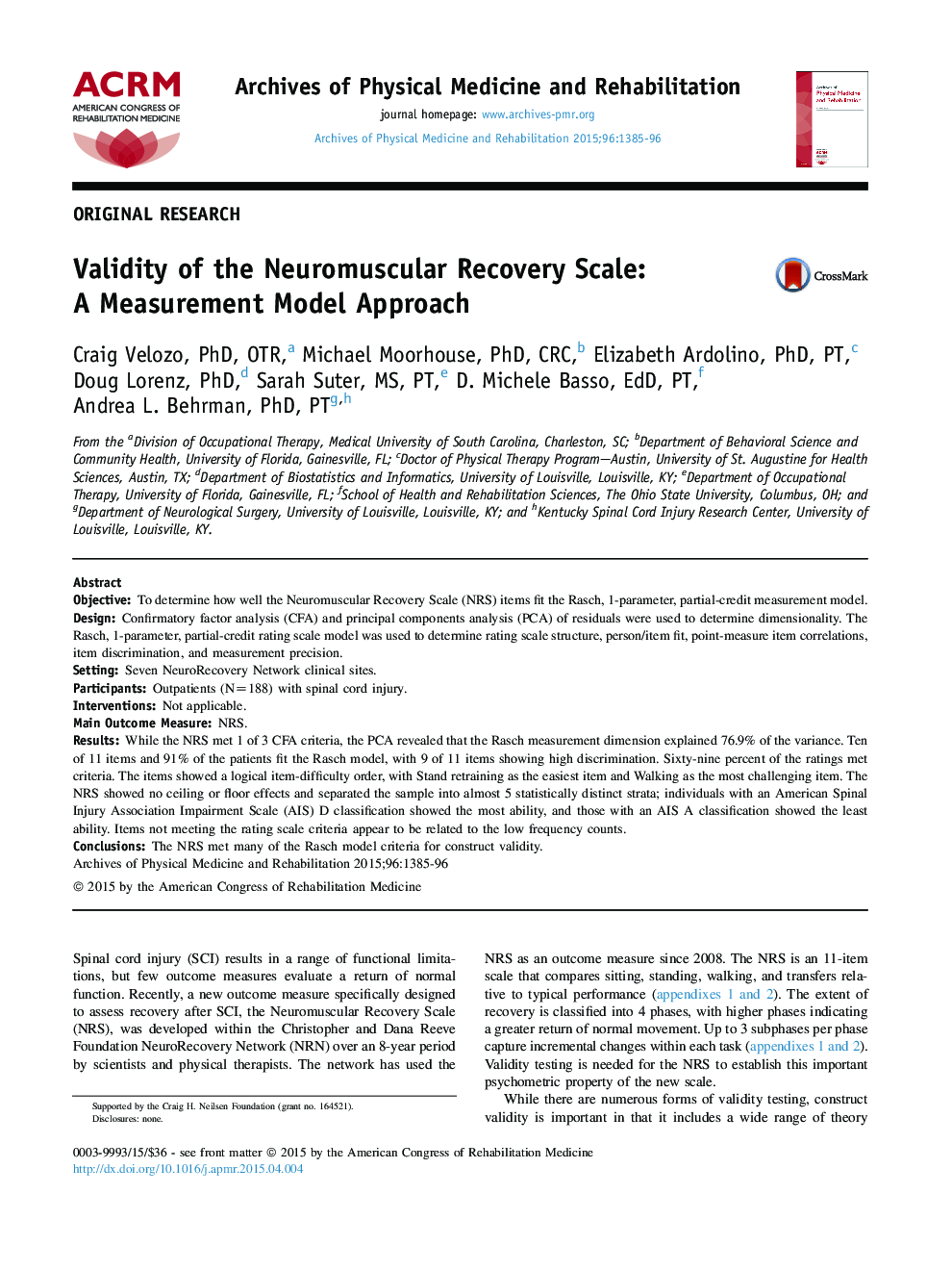| Article ID | Journal | Published Year | Pages | File Type |
|---|---|---|---|---|
| 3448293 | Archives of Physical Medicine and Rehabilitation | 2015 | 12 Pages |
ObjectiveTo determine how well the Neuromuscular Recovery Scale (NRS) items fit the Rasch, 1-parameter, partial-credit measurement model.DesignConfirmatory factor analysis (CFA) and principal components analysis (PCA) of residuals were used to determine dimensionality. The Rasch, 1-parameter, partial-credit rating scale model was used to determine rating scale structure, person/item fit, point-measure item correlations, item discrimination, and measurement precision.SettingSeven NeuroRecovery Network clinical sites.ParticipantsOutpatients (N=188) with spinal cord injury.InterventionsNot applicable.Main Outcome MeasureNRS.ResultsWhile the NRS met 1 of 3 CFA criteria, the PCA revealed that the Rasch measurement dimension explained 76.9% of the variance. Ten of 11 items and 91% of the patients fit the Rasch model, with 9 of 11 items showing high discrimination. Sixty-nine percent of the ratings met criteria. The items showed a logical item-difficulty order, with Stand retraining as the easiest item and Walking as the most challenging item. The NRS showed no ceiling or floor effects and separated the sample into almost 5 statistically distinct strata; individuals with an American Spinal Injury Association Impairment Scale (AIS) D classification showed the most ability, and those with an AIS A classification showed the least ability. Items not meeting the rating scale criteria appear to be related to the low frequency counts.ConclusionsThe NRS met many of the Rasch model criteria for construct validity.
